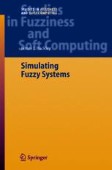Search
Search Results
-
Machine Servicing Problem
The machine servicing problem is shown in Fig. 14.1 and a basic description can be found in almost any operations research book ([1] p. 573(....
-
A Bus Stop
We have plenty of complaints about a certain bus stop. People can not get on the bus because when it stops it is already too crowded. We could add...
-
Bank Teller Problem
This is a classical problem in queuing theory: should there be multiple queues, one for each teller in a bank, or should we have one single queue for...
-
Genetic Algorithms Based Hybrid Intelligent Systems
The oldest branch of Evolutionary Computation, namely GA, is at the same time the used in real-world applications of HIS. Chapter 8 of the book tries...
-
The Challenge of Hierarchical Difficulty
Thus far, we have examined the Bayesian optimization algorithm (BOA), empirical results of its application to several problems of bounded difficulty,...
-
Life Insurance: New Account Model
This problem was derived from an example in [1]. The system is shown in Fig. 15.1. This figure shows how this insurance company handles an...
-
New Trends of Develo** Hybrid Intelligent Systems – AIS Hybridization and DNA-Hybridization
As already mentioned in Chap.1, the use of biologically inspired CI techniques play a crucial role for the hybridisation at any level of HIS features...
-
Thematic Fuzzy Prediction of Weed Dispersal Using Spatial Dataset
This paper demonstrates the framework and methodology of how weed population dynamics can be predicted using rule-base fuzzy logic as applied to GIS...
-
Fuzzy Logic Strategy of Prognosticating TCP’s Timeout and Retransmission
The work presented in this paper is the design and implementation of an intelligent strategy using fuzzy logic technology to gauge the TCP timeout...
-
Efficient ReasoningWith FuzzyWords
Dealing with coarse granular information is very attractive for several reasons: 1. The number of details in an application might be so large that...
-
Soft Computing Models for Network Intrusion Detection Systems
Security of computers and the networks that connect them is increasingly becoming of great significance. Computer security is defined as the...
-
Serendipity in Text and Audio Information Spaces: Organizing and Exploring High-Dimensional Data with the Growing Hierarchical Self-Organizing Map
While tools exist that allow us to search through vast amounts of text within seconds, most systems fail to assist the user in getting an overview of...
-
Identifying Interesting Patterns in Multidatabases
In this chapter we develop a new technique for mining multidatabases. The new mining algorithm, by comparing to traditional multidatabase mining...
-
On the Classification of Maze Problems
A maze is a grid-like two-dimensional area of any size, usually rectangular. A maze consists of cells. A cell is an elementary maze item, a formally...
-
Learning Classifier Systems: A Reinforcement Learning Perspective
Reinforcement learning is defined as the problem of an agent that learns to perform a certain task through trial and error interactions with an...
-
Aspects of Statistical Inference
With the background in previous chapters, problems of statistical inference with fuzzy data should be somewhat straightforward in principle! By that...
-
Convergence of Random Fuzzy Sets
As in Chapter 5, we view random fuzzy sets as generalizations of random closed sets on R d , or more generally on...
-
Maximization of Combustion Efficiency: A Data Mining Approach
Maximizing combustion efficiency with minimizing emissions is of importance to electric power industry. In this research, the impact of data...
-
Supporting Deep Learning in an Open-ended Domain
Self-explanation has been used successfully in teaching Mathematics and Physics to facilitate deep learning. We are interested in investigating...
-
Basics of Machine Learning by Support Vector Machines
Here, we talk about the (machine) learning from empirical data (i.e., examples, samples, measurements, records, patterns or observations) by applying...
